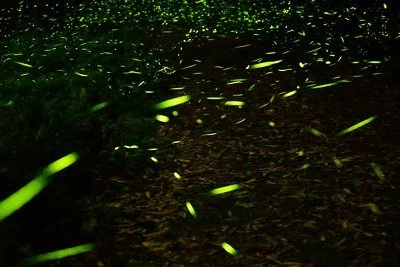Be Fungal, Not Viral
BY BOB LALASZ
I gave this short talk below to the nominees for the 2020 Pritzker Emerging Environmental Genius Award as well as the award community at UCLA’s Institute of the Environment and Sustainability. The Pritzker Award (for $100,000) goes annually to a scientist, entrepreneur, engineer, activist or artist under the age of 40.
Hello everyone, from Arlington, VA, just outside of Washington DC, where I’m happy to report there’s absolutely nothing of significance going on at the moment. I’m thrilled to be able to talk with you, especially in the breakout rooms later.
Colin has asked me to talk right now about the state of communications today. Everywhere. In eight minutes.
How about we do that in 30 seconds?
A scholar whom I admire, Dan Kahan, said in 2013 that we live in a “polluted science communications environment.” He was talking about how the fact that who we are as social animals often gets in the way of our ability to accept and act on science.
That was seven years ago. Today, it seems like an episode from “Vikings.” We’d love to just be “polluted” in our communications — science and otherwise. “Trashy” is more like what we now face. I’d say we’re compacted in communications trash.
RELATED
Beyond Extremely Online Expertise
There is an alternative for public experts: Smaller scale, but deeper impact.
In my practice, I advise some the biggest conservation organizations in the world on thought leadership and strategic communications.
And I also advise tiny startups — both NGO and nonprofit — that tackle challenges like energy poverty and water security, using solutions based in research.
All of them think they are swimming upstream against the same river of communications trash.
All of them think they face many of the same challenges many of you told us you are facing.
Your funders can’t see past COVID.
Your narrative and messages don’t seem to have much bite with your target audiences.
Media are hopeless.
The good news and the bad news is: It’s always been this way.
For 25 years I have heard organizations ask the question: “How do we get the word out?”
My answer: If you mean it the way I think you mean it, you’re asking the wrong question.
Why You Should Be Viral
Getting the word out (the way people usually mean it) describes a one-way dynamic. And one-way communications — unless you’ve got an amazing algorithm and a killer budget or you’re selling washable rugs on Instagram — will not help you in a world of trash.
When the world goes trashy, you want to go deep. Very deep.
You don’t want to be viral. You want to be fungal.
Stay with me for a minute.
What’s the largest organism on Earth?
It’s a honey fungus — probably one in the Blue Mountains in Oregon that’s almost 3 miles wide.
They think. It’s hard to find the beginning or the end of it.
It’s been growing for about 8,500 years. It’s incredibly successful in part because it’s figured out how to make everything else growing above it its food. It’s killed off whole forests.
It’s also incredibly successful because it’s first and foremost a network. It’s such a good network that plants use it to communicate with each other. It’s an underground internet of mutual benefit and identity.
It listens. It’s not grasstops. It’s not even grassroots. It’s way, way deeper.
Being fungal isn’t about reaching for the biggest possible audience. It’s about assembling the most aligned audience. The audience that will hear your story and say: “I love that story. That’s my story.” The audience that will become the evangelists and connectors for your idea. The audience that you can’t spread your idea without.
Obviously, you can get really big by being fungal — but being fungal isn’t about reaching for the biggest possible audience.
It’s about assembling the most aligned audience. The audience that will hear your story and say: “I love that story. That’s my story.” The audience that will become the evangelists and connectors for your idea. The audience that you can’t spread your idea without.
You want to be fungal because you want a network that works for your idea constantly. That spreads your messages slowly but pervasively — even in the dark, without you knowing it. A network that extends your idea into places you could never take it.
It’s All about the Conversation
Who are your evangelists right now? And who are the people you absolutely need to become your evangelists right now? The five people at DFID and the World Bank? Those three heads of corporate sustainability? That columnist at the FT?
Make a terrain map of all of them. Then invite them to conversation.
RELATED
You're 'The Central Place' Now
Pick yourself and the ones who want to talk to you
Start a conversation with them on Twitter. Invite them to subscribe to your Substack. Ask them to guest on your podcast or Twitch series. Send them that Times piece that quoted them and ask them to talk about it. Hold a private convening with a few of them as expert panelists.
From that list, you can tell: It helps if you’re doing content. A lot of content. Content helps you feed your network — with your insights, your stories, your passion and your vision for a promised land.
It also sharpens all of those things as you listen to their feedback.
Keep the conversation going.
Because it’s about the conversation.
When you do fungal right, your network will inevitably come back to you and say something like: “I see you everywhere.”
The most successful entrepreneurs — researchers or not — that I’ve worked with have three things in common:
They have strong points of view;
They feed their networks constantly with fresh stories and insights about the world based on those POVs (what we call thought leadership); and
They invite their networks into conversation with them about their insights and solutions.
Insight content energizes your network. It allows them to improve your way of seeing and eventually adopt it. It shows them the white space — the new entrepreneurial and intellectual territory — that your idea is colonizing.
When you do fungal right, your network will inevitably come back to you and say something like: “I see you everywhere.” What they see is you — your idea, your vision, your insights — reflected in the power of the network and even in their own lives. That’s the power of fungal.
No matter what we’re facing right now, reality isn’t viral. It’s fungal. Most concepts aren’t rapidly contagious. They infiltrate slowly. Marketing science shows that, unless people are repeatedly exposed to a new concept or product, they won’t even acknowledge it.
And once we’ve acknowledged the new thing, repeating it again and again builds our processing and retrieval fluency around it. We come to believe or prefer it — the truth effect.
RELATED
Just Expertise Alone Isn't Trustworthy
The US public consistently lacks high levels of trust in scientists. Scientists need to realize that science alone doesn't automatically yield public trust.
Making this shift to frequency — especially, a higher frequency of thought leadership content — is really hard, especially for researchers. Researchers don’t publish the same finding twice. We might expand on it later, but we won’t repeat it.
But when we’re working to get something across to actual people — instead of conforming to a cultural norm — expressing your POV frequently is important. Clarity by itself doesn’t beget understanding. Frequency does.
If you want impact, then starting conversations with your POV and your story is your job. And fungal is your goal.
The marketer Seth Godin says: Persistent, consistent and frequent stories, delivered to an aligned audience, will earn attention, trust and action.
In a world of trash, go deep. Go fungal. Because God knows we need a lot less viral right now. +




